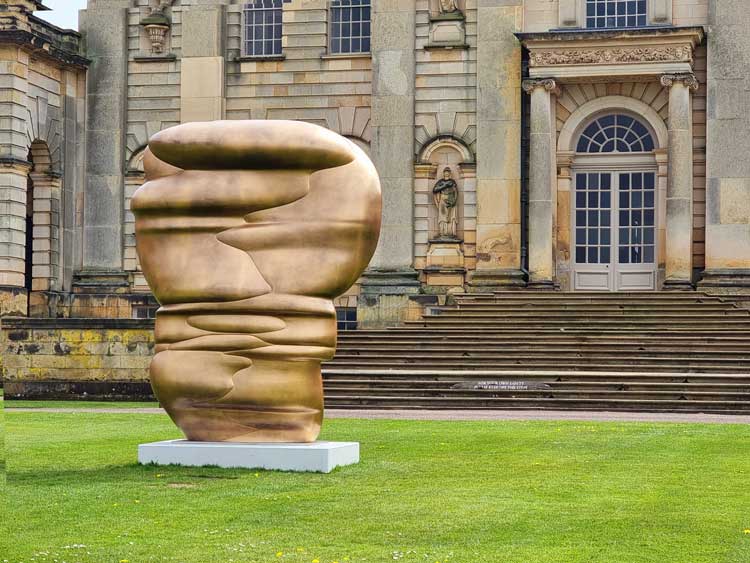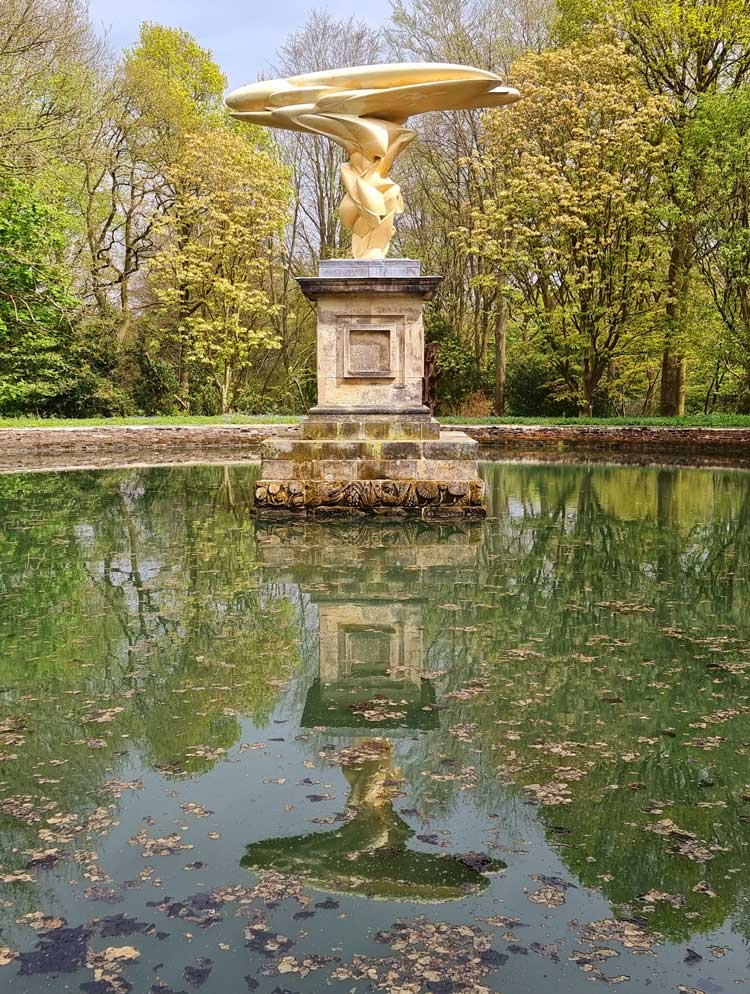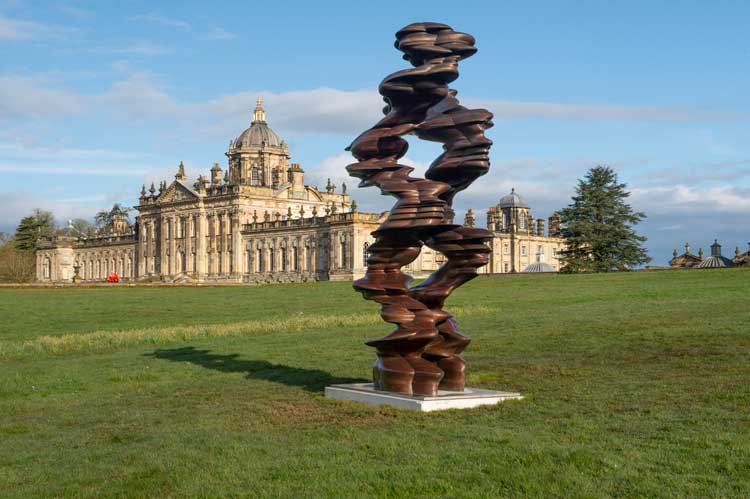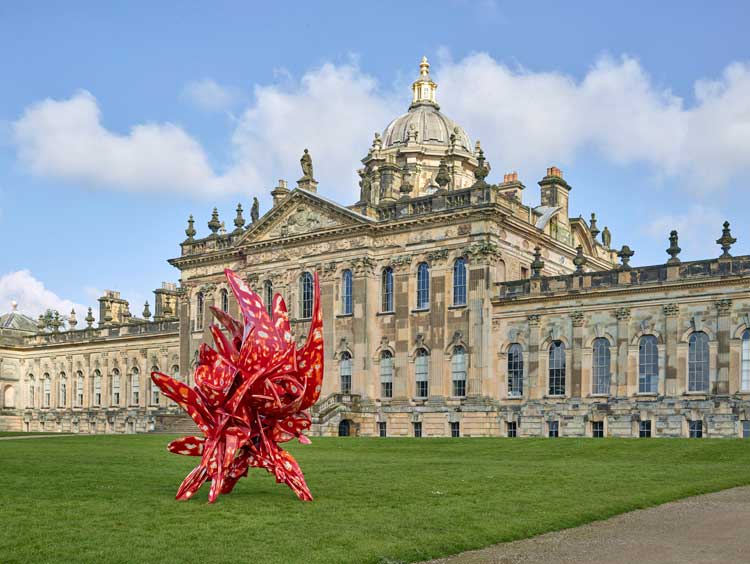One of Europe’s most successful sculptors, Tony Cragg (b1949, Liverpool) has exhibited in a remarkable range of settings: from pure white galleries and steel-and-glass streets to Norfolk’s historic Houghton Hall and Florence’s Boboli Gardens. Now Cragg has 28 sculptures and 14 drawings spread across the house and grounds of 300-year-old Castle Howard – arguably the UK’s most famous country house after its starring roles in TV’s Brideshead Revisited and Bridgerton. It is the estate’s first major foray into the display of contemporary art, and while Cragg’s work is almost always created as standalone sculpture, rarely site-specific, this show nonetheless throws up some interesting juxtapositions, links and contrasts to the permanent collection of neoclassical to 19th-century sculpture, architecture and landscape.

Masks, 2024. Bronze, 320 x 253 x 125 cm. Tony Cragg at Castle Howard. Photo: Juliet Rix.
Born and raised in Liverpool, Cragg had a couple of jobs in science and industry before deciding to go to art school. After two years at Gloucestershire College of Arts and Technology, he did a painting degree at Wimbledon School of Art – during which time he began to discover sculpture. An MA in sculpture at the Royal College of Art followed, leading to his first Stack sculpture, made from found material, that kicked off a “family” of layered columnar works, which has continued to develop ever since.
Cragg came to public notice as soon as he left the Royal College in 1977, when he was chosen to exhibit alongside such famous names as Henry Moore and Barbara Hepworth at the Queen’s Silver Jubilee Exhibition of Contemporary British Sculpture in Battersea Park, London. In the same year, he married his first wife and moved to her home town of Wuppertal, Germany, where he still lives and works.

Over the Earth, 2015. Fibreglass, 320 x 145 x 523 cm. Tony Cragg at Castle Howard. Photo: Juliet Rix.
Sculpting abstract forms from all sorts of materials – including steel, bronze, plywood, glass, fibreglass and plastic, often at monumental size – Cragg soon became associated with the New British Sculpture movement, and in 1988 he won the Turner Prize. In the same year he represented Britain at the Venice Biennale and was appointed to a professorship at the Kunstakademie Düsseldorf. He was elected to the Royal Academy in London in 1994 and knighted in 2016, also gaining major accolades in Germany, France, Japan and Russia, and exhibiting more-or-less constantly across Europe and the wider world.

Runner, 2015. Bronze, 420 x 280 x 158 cm. Tony Cragg at Castle Howard. Photo: Nick Howard.
With interests in geology, palaeontology and biological forms (including the human figure), as well as man-made objects, Cragg has, in his 50 years of making sculpture, developed a number of “families” of sculpture to which he keeps returning. One of the first was Early Forms (exploring morphology, especially of vessels, and the transformation of familiar containers into new sculptural forms), followed by Rational Beings– represented at Castle Howard by the dynamic Runner (2015), set against the static backdrop of the estate mausoleum. Stacks are here too – with his signature layered columns – as well as a new direction represented by a recently made sculpture, Industrial Nature (2024).

Industrial Nature, 2024. Aluminium, 240 x 176 x 191 cm. Tony Cragg at Castle Howard. Photo: Michael Richter
Studio International caught up with Cragg in front of this sculpture at Castle Howard as the exhibition was about to open.
Tony Cragg at Castle Howard, Yorkshire,
3 May – 22 September 2024
Interview by JULIET RIX
Filmed by MARTIN KENNEDY